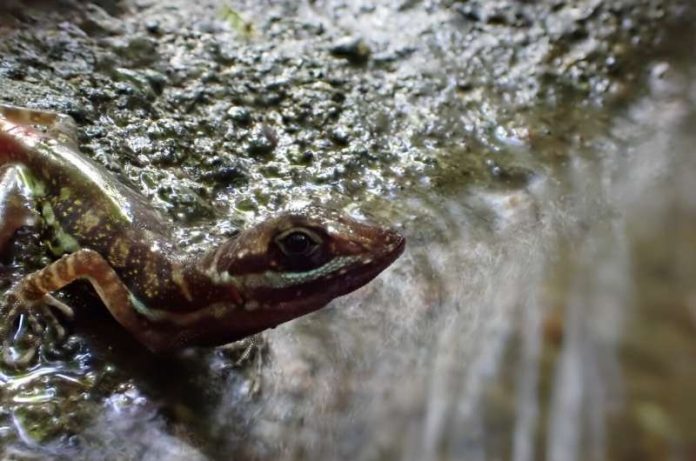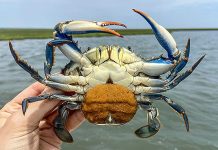
In the world of lizards, anoles are like the superheroes of the sea, able to hold their breath and dive underwater for more than 16 minutes.
These tiny lizards, which are found in South America, have a unique way of surviving.
They are cold-blooded, meaning their body temperature changes with their surroundings. So, when they take a dip in a cool stream, it’s a bit of a balancing act.
A team of scientists, including Alexandra M. Martin from Binghamton University, Christopher K. Boccia from Queens University in Canada, and Lindsey Swierk, also from Binghamton University, have been studying these little creatures.
They’ve been trying to understand how diving into water affects them, especially since it makes them cold and could slow them down.
The researchers found out something really interesting about how anoles breathe underwater. These lizards can create a tiny bubble of air around their nose to breathe while they’re submerged.
This trick helps them hide from predators or even curious scientists. If danger is near, they’d rather jump into the water than try to outrun it on land.
When comparing male and female anoles, the team noticed that males tend to spend a little less time underwater than females—about 20 seconds less, on average. This difference might seem small, but it could be crucial in the wild.
A predator might give up waiting for a lizard to reappear if it takes too long, making those extra seconds a matter of life or death.
Diving into cool water has its downsides, though. The lizards can lose up to 6°C (about 11°F) of their body heat, which is a big deal for them. Being cold-blooded, anoles rely on the sun and their environment to stay warm.
If they get too cold, it can affect their muscles and make it hard for them to move quickly, which is important when they need to escape danger.
Getting warm again isn’t easy for anoles, especially in the cooler, higher places where these scientists were studying them. The average day might be around 70 degrees Fahrenheit, which is mild but not exactly toasty.
The team discovered that the reason males and females spend different amounts of time underwater isn’t because of how they use oxygen. Instead, it’s about the roles they play.
Male anoles like to show off and look for mates, while females are more focused on choosing the right partner and laying eggs. By staying underwater for shorter periods, males can keep their body temperature up, which helps them stay active and ready for mating.
Females, on the other hand, seem willing to stay cooler for longer if it means avoiding predators, since they don’t have the same need to be constantly on the lookout for a mate or defending their territory.
These lizards even have a special feature that helps them keep a bit warmer while they’re underwater. They maintain a layer of air around them, almost like a diver’s dry suit, which might help them hold onto some body heat.
The scientists are amazed by how anoles and other animals adapt to their environments. They’re excited to keep exploring these adaptations, hoping it might inspire new ideas for technology and design.
The natural world is full of surprises, and the anoles are just one example of the incredible ways animals have evolved to survive.
The research findings can be found in Behavioral Ecology and Sociobiology.
Copyright © 2024 Knowridge Science Report. All rights reserved.



